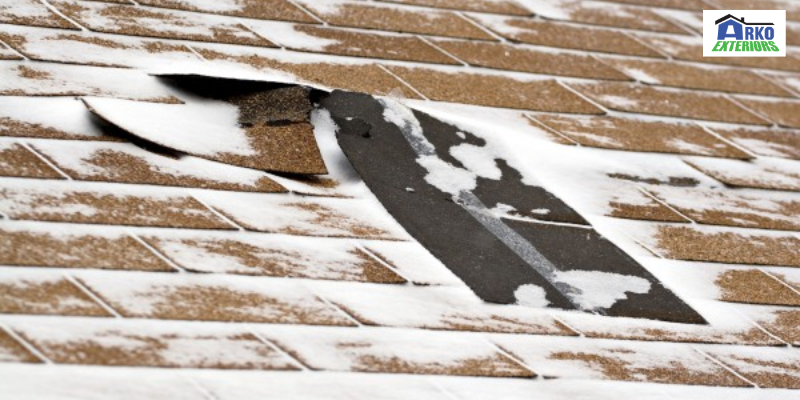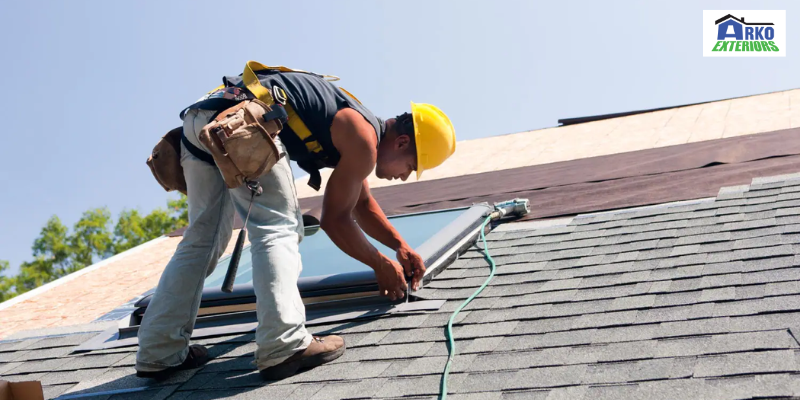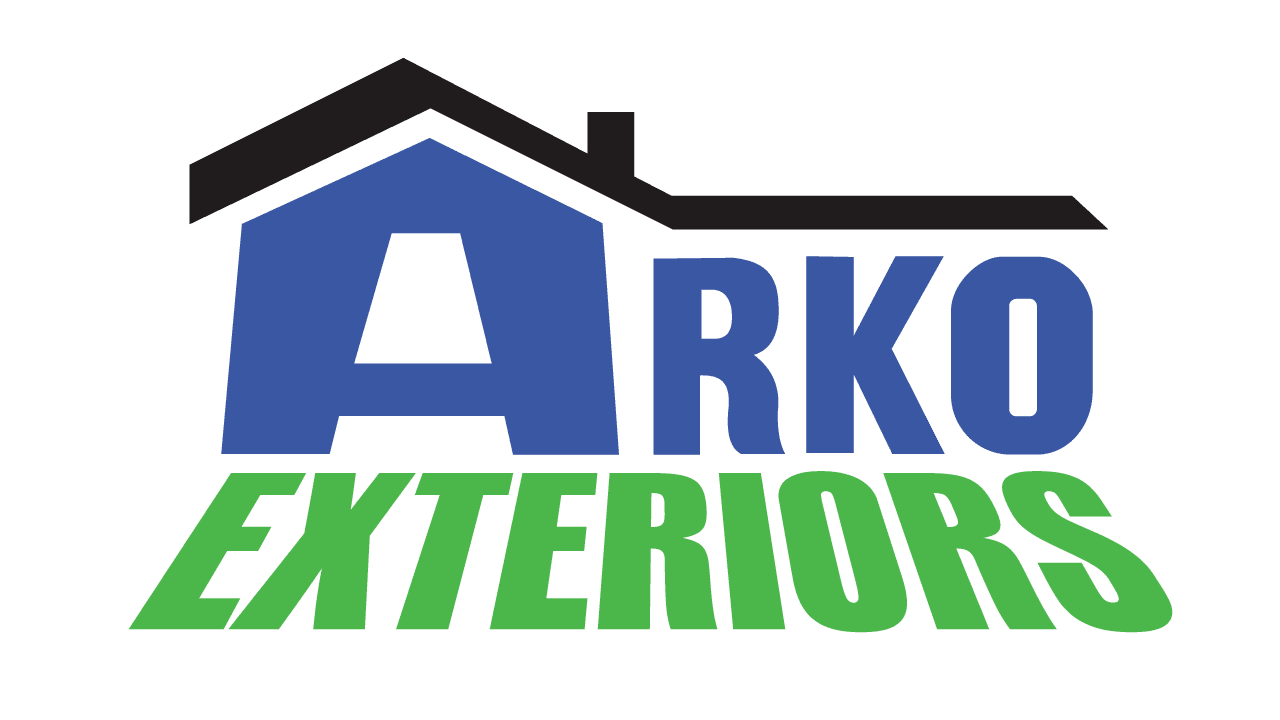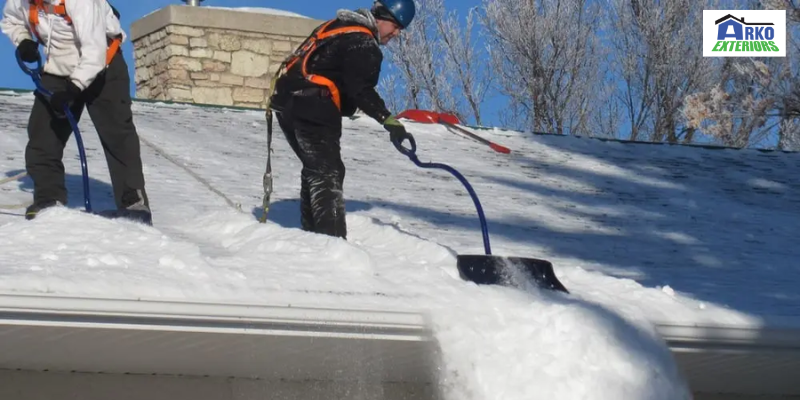During winter, whether your roof is flat or sloping, it’s time to address typical winter roofing issues. Winter is, after all, tough on roofs. There are various problems that, if not resolved right away, can result in expensive roof repairs, such as leaking flashing and asphalt shingles that are being dislodged by chilly winds.
7 Ways to protect your roof and avoid winter roof damage

One of the hardest seasons for your roof is winter. Ice dams and condensation from inadequately insulated attics are just two things that can harm your roof during the colder months.
Here are some ways to protect your roof in winter…
#1 Examine your roof

How recently have you inspected your roof? Inspect the roof immediately, especially if it has been a while. You won’t know how harmful a tiny issue can be without doing a thorough investigation. For instance, minor flaws and weak points that don’t appear dangerous might develop into many issues, leaving your roof prone to snow and ice damage. This can lead to immense mold growth, wood damage and leaks. By regularly inspecting your roof, you can make repairs before they worsen.
#2 Check your drainage
Ice dams are far more likely to form on your roof when dried leaves are caught in the rain gutters and drains– it is crucial to evaluate your drainage system before significant snowfall because of this. Ice dams and water damage are prevented by cleaning drains (gutters) and removing debris from downspouts which allow water to flow off of and then leave your roof.
#3 Trim tree branches
In the winter, trees might threaten your roof. Overhanging branches have the potential to scratch the roof’s surface and harm its barrier. If branches fall onto your roof, snow and ice may accumulate and hinder drainage. Trim any branches that are six feet or less from your roof as soon as possible to avoid problems when bad winter weather arrives.
#4 Invest in attic insulation
Attic condensation can become a significant issue in the winter. It happens when warm, wet air rises into the attic space from the main living area and comes into contact with the frigid deck of your roof. Condensation in your attic might result in the growth of mold and mildew if the attic is improperly insulated. Make sure your attic is adequately ventilated and insulated to avoid condensation forming. Make sure your dryer and bathroom vents are directed outdoors and fix any cracks or weak points that are allowing air to leak.
#5 Keep removing excess snow from your roof
Winter weather is characterized by ice pellets, snow and freezing rain. Particularly vulnerable to snowfall and drifting are flat rooftops. To avoid ice jams, water intrusion and eventual roof collapse, it is crucial to frequently clear snow from your roof. You can use a roof rake to do so.
After a significant snowstorm, remove any built-up snow. If you ignore it, your roof may get stressed and develop several issues, such as ice accumulation and water leaks, which may eventually necessitate expensive roof repairs.
#6 Repair or replace damaged shingles
Be sure to inspect your roof after a significant snowfall to check for (and repair right away) any broken, missing or distorted shingles. If leaks are not fixed, the wood sheathing and rafters underneath will decay from the melting snow.
#7 Install electric heat cables
To prevent ice dams, you can install electric heat cables on your roof. To stop melting water from cooling down enough to freeze, install them in a zigzag pattern around the edge of the roofline and gutters. This will prevent water from freezing and forming ice dams and allow it to flow to the ground. Although it may not be visually appealing, this setup can effectively avoid ice jams.
Summary:
Your roof, gutters and chimney may all be checked by roof inspectors for flaws or damage. Schedule a roof assessment as soon as you have any problems or see any potential issues. The experts of Arko Exteriors offer reliable roofing services. Call Arko Exteriors at 763-434-2756 for more information.

